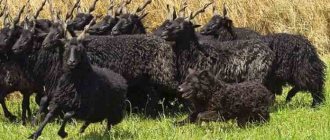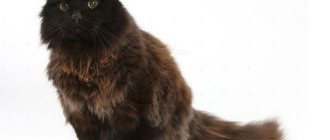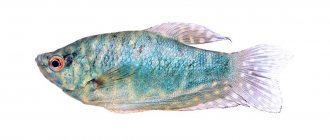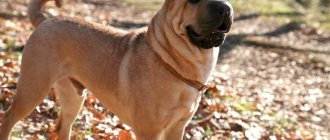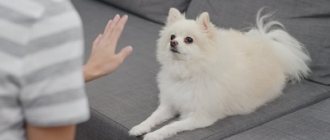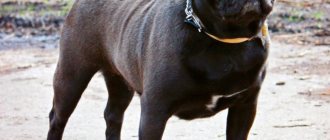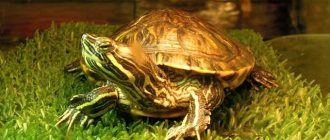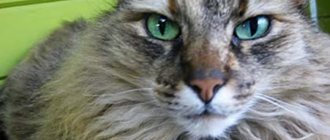Are you planning to get a dzhungarika? It would be wise to familiarize yourself with the rules for keeping the animal in advance and understand how to care for it.
Already have a hamster and have doubts about how to properly care for it? Read the article to the end, and you will have virtually no questions left about the care, maintenance and nutrition of the Djungarian hamster at home.
Proper care means a happy hamster!
Choosing a house for a dzhungarik
It is most convenient to keep and care for a Djungarian hamster in:
- cage
- dune
- large aquarium (with good ventilation)
- terrarium
- rack
Let's look at each option in a little more detail.
Cell
A cage is one of the most convenient homes for keeping a hamster. Most importantly, when purchasing, pay attention to the following points:
- The pallet is preferably plastic. Wooden is chewed, and it absorbs odors.
- For ease of maintenance, it is better to take it with a removable tray.
- Choose higher plastic sides: less filler will fly out of the cage.
- The rods must be metal (again, so as not to be chewed).
- Choose a cage with small distances between the bars. Djungarians are so small that they crawl between them, and it is impossible to keep them in such a house.
- The recommended bottom size for one animal is approximately 30x50 cm.
- Inspect the entire structure: there should be no burrs, sharp edges or protruding ends of the wire anywhere. The baby is easy to hurt.
Dune
Dunes for keeping rodents are becoming increasingly popular. And for good reason. The advantages of such houses:
- the sides are solid: no matter what games the Djungarians play, there will be no filler on the floor;
- even the smartest hamster will not be able to open the door in the “ceiling”;
- the upper part is transparent, you can clearly see what the animals are doing;
- small dunes can be used as portages;
- very easy to clean thanks to its simple and well-thought-out design.
There are also mixed options for keeping, which can be called “cage dunes”. Typically in these dunes, more sections of metal cage are inserted between the tray and the lid. This way you can increase the height and provide ventilation.
You can buy ready-made houses of any variety here (there are both budget options and luxury “villas” for keeping a pet).
Dune, cell and their hybrid.
Aquarium
Keeping hamsters in an aquarium is not recommended. The fact is that they are usually narrow and poorly ventilated. In addition, if the aquarium is glued together and not solid, poisoning from the glue is possible (rodents taste everything).
The advantage of keeping it in an aquarium is that you can clearly see how your pet plays. Children especially appreciate this. If you buy an aquarium that does not contain harmful substances and provide a flow of fresh air (forced ventilation), then there will be no harm to your Djungarian pet.
Terrariums and glass shelving
This is a good option for keeping (subject to a minimum bottom size of 30x50 cm). Everything is visible, very spacious and (in the case of shelving) takes up little space. The only drawback is that care is not very convenient. An excellent choice for breeding Djungarian hamsters, but for one individual there is probably no point in such a large house.
Houses made from scrap materials
Based on the size requirements (30x50 for one rodent) and ventilation, tiny options such as a jar or cardboard box are immediately eliminated: high-quality care and maintenance of a Djungarian hamster in them is impossible. Otherwise, complete freedom for your ideas. The main thing is to ensure sufficient size and air flow.
Not that I'm complaining, but isn't there something bigger?
Care and maintenance at home
Caring for Djungarian hamsters is not burdensome. Those who want to create good conditions for their pets only need to properly equip the house and constantly monitor its cleanliness. You also need to take care of a healthy and varied diet and try to tame the hamster. Then communication with him will bring joy.
Cage and filler
The Dzungarian's home is the place where he will spend his entire life, so it is better to immediately choose a suitable and comfortable house. Although the pet is small, it will need a spacious cage. Minimum dimensions – 50x30cm. The height of the structure depends on the number of tiers (floors).
Cardboard boxes or glass bottles are not suitable for keeping dwarfs at home. Wood structures will be damaged by sharp teeth. The ideal option is a spacious cage with a deep plastic tray and a metal grill. It is important to ensure that the door fits tightly and closes securely.
Attention! When choosing a home for a dzhungarik, it is important to pay attention to the distance between the rods. It should not exceed 1 cm. Otherwise, the pet may escape if it sticks its head through the bars.
Djungarians are kept not only in cages, but also in an aquarium. The glass offers a good overview, making it easy to watch your pet. In addition, in this case it is much easier to care for the hamster, pick it up and keep it clean. However, if there are other pets in the apartment, such as cats, the upper part should be covered with a metal grill.
Filler is poured into the tray. Some people use paper, but this is impractical and inconvenient. It is better to buy special granules, for example, cellulose or corn litter. As a last resort, you can add sawdust to the bottom. Preference should be given to soft wood shavings that are not very dusty.
Cell location
When choosing a suitable location for the cage, there are several factors to consider.
First, you should think about the safety of your pet. If cats also live in the apartment, then they should not have access to the place where the hamster stands. If you place the cage somewhere on the nightstand, there is a risk that the cats will knock it over. The window sill is also not the most suitable place, especially if the window is on the sunny side.
Attention! Djungarians kept at home often die from overheating. For this reason, the cage must be protected from direct sunlight.
Secondly, you need to take into account the fact that hamsters sleep during the day and are active at night. When everyone goes to bed, they run around in the wheel and arrange the hole. This activity is accompanied by constant rustling noise. Therefore, it is better not to place the cage in the bedroom. More suitable places for its location:
- living room;
- hallway;
- hall.
Attention! The cat will not be able to reach the dungeon if the cage is attached to the wall at a height of 1 m. In such conditions, nothing threatens the pet.
Inventory for dzhungarik
For a comfortable life, a hamster will need a rest house. As soon as dawn breaks, the pet climbs inside and falls asleep. One corner is always used for storing food supplies.
Djungarians are constantly busy arranging their nest. They bring paper, pieces of cardboard, whatever they find inside. Therefore, you should make sure that your pet has so-called building materials.
In addition to the house, the dwarf will need a sports corner. In their natural environment, hamsters run from 5 to 10 km per night in search of food. At home, they do not have to look for food, because the feeder is nearby.
A sedentary lifestyle can lead to the Djungarian hamster developing diabetes due to excess weight. Therefore, the wheel is a truly necessary thing. Djungarik will certainly enjoy running in it at night.
In addition to a house and a sports corner, to keep a pet at home you will need:
- container for food - it is better to give preference to a ceramic bowl that is difficult to tip over;
- drinking bowl - it should be attached to the cage bars;
- pipe tunnels - they are installed inside the home to connect floors;
- running ball - for safe walks around the apartment.
To grind down teeth you will need a mineral stone or special sticks, which are sold in pet stores. As a sharpener, you can use branches of fruit trees or shrubs - apricot, cherry, currant.
Hygiene
Dzungariki are clean pets. They love to clean up their house and wash themselves. The owner must maintain comfortable living conditions for the hamster. Every week you need to clean the cage - replace dirty bedding, wash the wheel, feeder and drinker. The tray must be washed with water without using chemicals. To remove heavy dirt and get rid of odors, you can clean it with baking soda.
Particular attention should be paid to caring for the house in which the pet sleeps. Within a few days, a huge amount of reserves accumulates there - seeds, grains and pieces of vegetables. Over time, they deteriorate and become moldy. It is dangerous for Dzungarik to eat such food - he may get poisoned.
Before you start cleaning, you need to prepare a container in which the hamster will temporarily stay. This could be a bucket, a tall plastic container, or a second cage. The main thing is to make sure that the dwarf does not escape. You should also limit the cat's access to the room where the hamster is while his home is being cleaned.
Attention! Catching an escaped hamster is not easy. At home, a nimble pet can hide in the most unexpected and hard-to-reach places. If you can’t find it, you’ll have to set special traps with bait in your apartment.
Domestic Djungarian hamsters are bathed in exceptional cases when dirt on the fur cannot be removed by other means. But it is better not to wash your pet in water at all - this is a lot of stress for him. But the Djungarians love to take a sand bath.
To clean fur at home, use a container two-thirds filled with special sand from a pet store. After your pet has had enough fun, you need to take it in your hand and clean the fur from grains of sand with a toothbrush. Usually this is enough to get the fur in order.
Taming
The Djungarian hamster is often bought for children. The child is not interested in just watching him - he wants to take him in his arms, stroke him, play. To make such communication possible, the animal will have to be tamed. The main condition for achieving success in this difficult task is to be patient.
During the first days of being in the house, the dzhungarik experiences extreme stress. He needs time to get used to new sounds and smells. During the adaptation period, it is better to leave him alone and not disturb him.
The following recommendations will help you get your hamster used to being handled:
- First, you should watch your pet to understand what time he sleeps, eats and plays.
- It is important to approach the cage as often as possible and talk to the dwarf in a calm voice.
- At the next stage, the hamster is offered a treat - raisins, peanuts, seeds. He must overcome his fear and take the treat through the bars. It is important to do this regularly and until your pet is completely no longer afraid.
- Then they gradually move on to tactile contact. The owner puts his hand with a treat into the cage and allows the dwarf to take it. If you do this every day, he will soon become so bold that he will begin to climb onto your palm and sit calmly on it.
- Now you can try to pull your hand and the hamster out of the cage. The main thing is to do it slowly so as not to scare your pet. Under no circumstances should you catch a dwarf and forcefully pull it out of its cage.
It is advisable to prepare a place for games in advance and create such conditions so that the hamster cannot escape. Gradually, the pet will get used to forays and understand that nothing threatens him outside his home.
Attention! When it comes to accustoming a dzhungarik to your hands, the main thing is regularity. If you work with a hamster from time to time, nothing will work. After a long break in communication with your pet, you will have to start all over again.
What does a hamster need in a cage?
List of what you need to keep a Djungarian hamster:
- small house for sleeping and storing supplies
- running wheel and/or labyrinth (required)
- food utensils
- drinking bowl
- mineral stone
- twigs for grinding teeth
- filler
Do not rush to “fix” all the objects in the cage according to your own design. First, let the dzhungarik determine a place for the toilet. And only then place food, water and a mini-mink as far away from it as possible.
Gym for dungarians
The running wheel is not intended for family observation of the hamster running in it, it is necessary for the health of the hamster. In nature, a hamster runs up to 12 km per night in search of a “snack.” When kept at home, there are 20 centimeters before eating, so the Djungarian hamster will quickly begin to gain fat. Given the tendency of this type of hamster to develop diabetes, obesity will end very badly. The rodent needs to engage in “sports”.
In addition to the wheel, a labyrinth of pipes “works great” - a small Djungarian hamster runs through them no less willingly than in a wheel. Interesting options for maintaining physical fitness can be found in the sections of the store with accessories and toys.
Excellent “apartment” with everything you need. And the area is okay...
Filler
We advise you not to use scrap materials as bedding in the house. Fibrous materials (for example, cotton wool) are strictly prohibited - the dwarf is tiny, it can get entangled in them. The preferred option for “homemade” fillers is finely chopped paper and napkins. The main thing is to make sure that it is without flavorings and printing ink. Paper with sharp edges (like office paper) is also unacceptable.
The best choice for caring for the dwarf is ready-made granular fillers, an abundance of which can be found in this pet store. As an alternative, you can use self-harvested sawdust (but not in the form of fine dust - it gets into the respiratory tract).
That's it. Owner, respect!
Teeth sharpener and mineral stone
The Djungarian hamster's teeth grow constantly (like your nails), so care is indispensable without a “sharpener.” These can be small branches of trees or bushes. You can prepare it yourself (an excellent option is an apple tree) or buy ready-made ones in the store. If you don’t foresee how the hamster will wear down his teeth, he will start gnawing everything around, starting with his home.
The hamster also needs a mineral stone to replenish microelements in the body.
Features of keeping Djungarian hamsters
First of all, you need to prepare a cage for your pet. For the normal functioning of the animal and increasing its lifespan, it should have approximate dimensions of 50x30 cm . The purchased cell must be filled. For this you will need:
- A spacious house for a hamster, who should easily walk into it with stuffed cheeks. The houses can be made of wood, cardboard, ceramics and plastic. Cardboard products are impractical, and ceramic and wooden ones are quite expensive. Therefore, the best option is a plastic house. There must be a place in the home where the rodent will store its supplies.
- You should also take care of maintaining the physical shape of the animal, for which a running wheel measuring 16-17 cm is installed in the cage. It can be made of fine mesh or have a solid surface.
- The feeder or bowl should be quite heavy, since hamsters love to turn them over. It is best if it is made of ceramic. It will be difficult to move such a bowl. Hamsters almost always stock up, so a plate that has just been filled with food will quickly become empty.
- Due to the nature of their origin, hamsters rarely drink water, but there must be a drinking bowl with clean water in the cage. It is not recommended to buy a regular plastic drinking bowl. The animal will throw sawdust at it or simply turn it over. It is best to choose a “nipple” drinker, which consists of a plastic container, a valve and a metal spout. It is attached to the wall of the cage, and the hamster presses the valve with its nose and receives water. He cannot simply pour out the liquid or spoil it.
- In order for rodents to grind down their teeth, they must be provided with branches of fruit trees. In winter, you can use chalk or mineral stone for this.
- Since you cannot bathe hamsters in water, you can buy a bathing suit for them and fill it with sand. The rodent will be happy to take sand baths.
Pet stores offer various sections, ladders, and tunnels , which are purchased at the owner’s request.
To keep hamsters, the cage must be filled with sawdust, which will serve as bedding for the rodent. It is acceptable to use some types of cat litter for this purpose. Under no circumstances should a hamster's home be filled with cotton wool. Animals can tear off pieces of it and eat them. As a result, the pet begins to have intestinal problems.
The cage with the hamster should not be in a draft or sun, near a battery or a noisy object such as a TV.
When keeping hamsters, the cage should be cleaned at least once every 7-10 days . This frequency of cleaning is necessary due to the characteristic odor of rodent urine.
Caring for dzhungarik
Caring for a rodent is quite easy, since it carries out all hygiene procedures itself.
With the help of its paws and tongue, the pet thoroughly cleans its body. Even in the burrows in which Djungarian hamsters live in nature, they manage to remain clean. This property was passed on to domesticated animals at the genetic level. They will not shit wherever they have to, but will choose one corner for a latrine. This behavior of the rodent makes it very easy to care for. When caring for hamsters, you should keep in mind that in winter, dwarf hamsters shed . The gray patches disappear on their skin, and it becomes white, with only one stripe on the back. The duration of molting depends on the length of daylight hours. If its duration is short, then the hamster changes color within six weeks.
Rodent nutrition
The simplest option for feeding a Djungarian hamster is special food mixtures purchased at a pet store. They include corn, seeds, oats, peas, and nuts.
From natural products, you can feed rodents with fruits and dried fruits, corn, zucchini, carrots, plantain, and lettuce. The only fruits that pets should not be given are citrus fruits. They will be happy to feast on bananas, apricots, peaches, and apples.
Since the Djungarians' diet must include protein , they need to be given boiled eggs, boiled chicken, and low-fat cottage cheese twice a week. You can add earthworms, dried gammarus, and boiled shrimp to your diet.
When feeding your hamster, be sure to keep an eye on what he hides in his closet. There should be no perishable foods there, otherwise the rodent may have digestive problems.
Where to put the cage
The peculiarity of caring for a Djungarian hamster is that it is a nocturnal animal. And you won’t be able to train him to stay awake during the day. Don't forget to remind the children not to bother the dwarf with games all day - hamsters sleep during the day.
Based on this, we choose a place to keep the rodent. The house should be placed away from direct sunlight. This should not be the living room or kitchen (too noisy during the day). The bedroom is also not suitable (the dwarf spends the night actively, and this will disturb you). As an option, you can transport the house to the bedroom in the morning and to the kitchen in the evening. Also, you can’t place it in a draft, but you need to provide access to fresh air.
Description of dzhungarik
The Djungarian hamster belongs to the hairy-legged dwarf species. Under natural conditions, it lives in the steppe regions of Altai, western Siberia and eastern Kazakhstan. This species is also found in Mongolia and northeast China.
Appearance
The hamster is small in size - its body length does not exceed 10 cm. Weight ranges from 35–60 g. Djungarians have a rounded body shape and a pointed muzzle. The forehead line smoothly transitions to the nose. The eyes of Djungarians are large, convex, dark in color, and resemble beads.
The hamster's body and paws are covered with soft and smooth fur, which is very pleasant to touch.
A distinctive feature of the dzhungarik is a darkened longitudinal stripe on the back. There are 4 colors in the breed:
- standard – gray-brown;
- sapphire – gray-blue;
- pearl – white with gray inclusions;
- tangerine - creamy red.
Character and habits
It will be easier to provide proper care for the jungarik if you learn more about its lifestyle. The hamster sleeps during the day, and at dusk comes out in search of food. He fills his cheek pouches with grain and seeds and carries it all into the house. The hole has 1-2 chambers for storing supplies.
Attention! In winter, Djungarian hamsters do not hibernate. When the air temperature drops below +15 degrees and daylight hours shorten, their fur coat becomes lighter and is not noticeable against the background of snow cover.
At home, Djungarians prefer to live alone. Calm, without a hint of aggression, the pet will gladly accept affection and fall asleep in the arms of its owner. These are very timid and gentle hamsters. They have a hard time with a change of environment and may even die from stress.
If you tame a hamster from a very early age, it will become a good friend for your child. Only children should be warned that in rare cases, out of fear, domestic Djungarians use their sharp teeth. Although their bites are not dangerous, they are quite painful.
Prices for dzhungarik differ slightly in different regions. The average cost of an animal is 100 rubles. For a Djungarian hamster with a rare color they ask for 200-250 rubles.
Health and life expectancy
At home, Djungarian hamsters live for about three years, and in the wild - about a year. This difference is explained by good care and good nutrition.
Djungarians have rather poor health. They often suffer from the following diseases:
- Cold or flu. The most dangerous for the Djungarian hamster are viral diseases that it can contract from its owners. Due to weak immunity, any infection can kill a pet. Alarming symptoms that should not be ignored: sneezing, lethargy, noisy breathing, refusal to eat.
- Injuries. When kept at home, dwarfs sometimes fall from heights. Often, the owners themselves accidentally let go of the hamster when they take it out of the cage. The consequences of hitting the floor can be very serious, even fatal. Some pets are injured right in the cage when they fall from the top level to the bottom. Signs of injury: disorientation, strange gait, crooked paws.
- Eye diseases. Djungarians living at home often suffer from conjunctivitis. When dust or debris from sawdust gets into the eyes, it leads to irritation of the mucous membrane and inflammation. The problem can be detected by sticky, swollen eyelids and pus that comes out of the hamster's palpebral fissure.
- Stool disorder. Djungarians have a sensitive digestive system. Due to errors in nutrition, they may develop liquid discharge with an unpleasant odor. This condition threatens dehydration and death of the hamster.
- Neoplasms. Domestic dwarfs have benign and malignant tumors. However, detecting them at an early stage is problematic. Typically, bumps appear on the stomach, under the paws, and sometimes on the hamster's head.
- Skin diseases. If your dog's fur is falling out or the skin is peeling and red spots appear on it, it is most likely an allergy or eczema. Dermatitis develops due to stress or due to improper feeding of the pet.
- Diabetes. Djungarians have a genetic predisposition to type 1 diabetes, in which the pancreas does not produce enough insulin. Signs of the disease: heavy and frequent drinking, increased urine volume, weight loss with normal appetite.
Caring for a Djungarian hamster at home includes taking care of its health. The owner must evaluate the condition of the vehicle on a daily basis. Deterioration in well-being is indicated by:
- low activity;
- loss of appetite;
- sloppy appearance of fur.
Attention! Constantly growing teeth cause a lot of trouble for the dwarf. When they become too long, they cause discomfort. This is why hamsters kept at home often chew the bars of their cage.
Cage care rules
A few words about how to care for a dwarf's house. Good care involves cleaning at least once a week. Or better yet, 2. It must include:
- replacing bedding
- wet cleaning
- removing leftover food from the pantry
- washing hamster "dishes"
Carry out grooming when your Djungarian pet is away from its cage - it does not like strangers. Do not throw away all the food at once - this can lead to severe stress for the dwarf. Remove only perishable items, such as grains, nuts, etc. leave it in place.
If the animal’s cage is very dirty and you have to use a detergent, then you need to choose a hypoallergenic and odorless one - a foreign aroma can scare away the Djungarian hamster; Because of such “leaving,” the dzhungarik will refuse to return to the house.
Lifestyle
Adult Djungarian hamsters prefer to live alone. Unlike home conditions, in the wild the Djungarians are forced to get their own food. Therefore, these animals are characterized by constant competition for territory, food, and females. Djungarian hamsters are fearless; an adult male can attack another animal whose size is many times larger than his own.
Djungarian hamsters usually lead a twilight or nocturnal lifestyle. During daylight hours, animals rest deep underground in their burrows, and at nightfall they come out to look for something to eat.
Djungarians spend most of their short life preparing food supplies. Using subcutaneous pouches on the side of the body, hamsters drag all their supplies into the burrow so that they can eat at any time.
This type of hamster does not hibernate in winter, however, its appearance changes: if the temperature stays below 16 degrees Celsius for a long time, then the animal’s fur becomes noticeably lighter. In preparation for winter, the hamster not only stores up food for future use, but also grows fat.
A persistent decrease in temperature of 10 degrees requires large energy expenditures from hamsters, causing dwarfs to fall into torpor, reducing body temperature to 20°C (the so-called torpor phenomenon). Moreover, this condition occurs in animals not only from cold, but also from stress.
Is it possible to house a dzhungarik alone?
Not only is it possible, but it is also necessary. You cannot keep a Djungarian hamster in the same cage with other animals (including hamsters) if you care about your pet. They are “selfish” animals, they don’t like their neighbors, they don’t make friends :). And if you put two same-sex people together, then expect trouble in the form of fights and possible injuries. It is better to care for several hamsters separately. Different sexes can be kept in the same house only for reproduction.
Friendship is friendship, but housing is separate
Habitat and lifestyle
In nature, animals live in steppes and semi-deserts. They live alone, uniting only during mating. The burrows have several “rooms” with different purposes: storage room, bedroom, toilet. They feed on seeds, grasses, and insects.
All this leads to the following content features:
- They need to be housed separately, otherwise expect conflicts and injuries
- Steppe hamsters do not like to bathe at all, it is better to give them a sand bath (read more about washing hamsters here)
- The house should be spacious
Keep in mind that the Djungarian hamster is a nocturnal animal. During the day he sleeps, and towards evening he begins an active lifestyle.
The character of the Djungarians, despite their “selfishness” in nature, is quite mild. This type of hamster is the easiest to train to handle, and they even enjoy being gently petted.
Let me sleep, it's day outside!
Reproduction of Djungarian hamsters
So how can dzhungarikas reproduce if they cannot be housed together? They need to be kept in separate dwellings, placed together only for the duration of mating (this can be done as soon as the female starts estrus). We perform mating on neutral territory or in the male’s house. To avoid making a mistake in choosing gender, read a detailed “manual” on its definition here. Otherwise, it may turn out that you looked after Khomka like Pushinka.
The ideal age for the first mating is 4-5 months. The period between matings for a female is at least 2.5 - 3 months. In total, a healthy hamster can give birth to up to 6 litters of small rodents; subsequent pregnancies are fraught with health problems for both the mother and the little hamsters.
When the female becomes pregnant, we seat the “newlyweds” back in their cages. A week before giving birth (maximum 5 days), we completely stop caring for the pregnant female’s cage and do not handle it. We just add food and water (do not forget to increase the content of animal protein in the diet of a pregnant Dzungarian female).
The birth of small hamsters will most likely take place at night and unnoticed. After a couple of weeks, add a separate water bowl and a smaller food bowl - small hamsters may be high up to "adult size". Babies can be placed 4 weeks after birth, boys and girls in different housing.
Try to guess where Khomka is and where Pushinka is...
Diseases of Djungarians
Representatives of this type of rodent sometimes get sick. The most common disease of the Djungarians is diabetes mellitus. The disease develops from poor nutrition, so it is necessary to carefully monitor your pet’s diet.
Wet litter and drafts can cause colds. In addition, “fluffies” can become infected with colds from their owners. To strengthen the immune system, it is advisable to give the animals fresh lettuce and parsley.
Typical diseases of the Dzungarians are intramural diseases. Moreover, if cataracts can appear closer to old age, then a young hamster can also get conjunctivitis, especially if its owner rarely cleans the cage.
An abundance of fatty foods increases the development of various tumors in rodents. The mechanism of their appearance has not yet been studied.
Sometimes furry animals suffer from skin diseases, which are accompanied by hair loss or dandruff. Skin ailments are caused by stressful situations in which a pet finds itself, or by individual intolerance to some substance.
An animal can be injured when falling from a height by sticking its paw between the bars of the cage. No pet is immune from dislocations and fractures.
Ticks and fleas cause parasitic diseases.
However, by following the principles of proper care and taking care of the cleanliness of your pet’s home, many diseases can be avoided. Caring owners will have a pet that looks cheerful and well-groomed. But if the animal’s behavior, the condition of its fur, or refusal to eat is evidence of a deviation from the norm, it is advisable to show the pet to a veterinarian.
What to feed the dwarf
Here we will give general recommendations on how to feed your Djungarian hamster. If you want to learn more about the nuances of proper nutrition for your rodent, read our article.
The basis of the diet of the Djungarian hamster in nature is seeds and cereals. For home care, we recommend sticking to the same menu. A good option is ready-made mixtures that can be bought in the store (they also sell treats there). Dried herbs, minerals, and vitamins are often added to them. The main thing is to buy food specifically for hamsters: food for other rodents and birds is not suitable.
If purchasing is unacceptable to you for some reason, watch the video on how to prepare the mixture yourself (below).
Cereals and seeds
The best cereals for dzhungarika (the content of harmful substances is minimal):
- oats
- wheat
- barley
- rye
- corn (in limited quantities)
You don’t need to give as many seeds as cereals, because... they have a high fat content. The Djungarian hamster can be fed with seeds:
- sunflower
- pumpkins
- sesame
- flax
Fruit seeds and seeds are strictly prohibited. They contain substances that can kill such a small animal as the dwarf.
The train of thought is correct, but you need to pour less.
Nuts
Nuts have a strong disadvantage - high calorie content and fat content (do not forget about the tendency of Djungarian hamsters to obesity). Sometimes (as a treat, and not constant feeding) the dzhungarika can be offered:
- Walnut
- cashew
- peanut
- hazelnut
Due to the content of harmful substances, you cannot feed these types of nuts:
- Brazilian
- almond
- cedar
Vegetables
For the Djungarian hamster, all vegetables should be divided into two categories: high-starch and low-starch. Avoid foods with a high starch content - this is an easily digestible carbohydrate, an excess of which in the diet leads to obesity and diabetes.
The most preferred vegetables in the diet:
- cabbage
- broccoli
- cucumber
- bell pepper
Absolutely not (contain a lot of easily digestible carbohydrates):
- potato
- boiled carrots
- boiled pumpkin
If you have doubts whether your baby can eat this or that vegetable, refer to the glycemic index tables of foods. What is harmful to humans is also harmful to your dwarf.
Vegetables are only low-starch and high in fiber.
Fruits and berries
For these products, we can give the following recommendation: strongly sweet fruits and berries are not allowed (watermelon, melon, peach), moderately sweet and sour ones are allowed (strawberries, cherries, currants).
In general, it is difficult to give specific instructions here: the content of fruit sugar (fructose) can vary greatly depending on location, growing method and weather. Therefore, in any case, give fruits and berries in limited quantities.
Protein
Despite the fact that the Djungarian hamster prefers plant foods, its diet should include animal proteins (a couple of times a week, and for pregnant and lactating females - a little every day). In nature, insects serve as protein snacks. You can buy them dried in pet stores. You can replace insects with low-fat boiled chicken or fish, egg whites - their fat content is minimal.
I ate everything, give me more!
What do Djungarian hamsters eat in the wild?
There is a common misconception that Djungarian hamsters feed exclusively on herbaceous plants. In fact, they are practically omnivores. The food is varied. In the wild, animals often hunt insects (grasshoppers, locusts, ants, caterpillars, moths, worms).
Animals also eat berries, young shoots of trees, foliage and roots of plants, seeds and grains. In search of food, these small animals are able to walk many kilometers.
Djungarians like to stock up for the winter. One individual is able to accumulate up to 20 kilograms of grains and seeds. And sometimes hamsters hide up to 90 kg in their burrows. Hamsters like to live close to people's houses, so vegetables from gardens appear on their menu. But they spoil quickly, so to replenish their supplies, hamsters often go into barns in search of grain.
Facts - some interesting facts about Djungarian hamsters
- In winter, Djungarian hamsters molt and replace their fur with white to blend in with the snow in their wild habitat and hide from predators. Domesticated dwarfs, as a rule, do not change their fur.
- Djungarians are more active during the daytime, compared to their closest relatives, Campbell's hamsters.
- These hamsters are capable of forming hybrids with the Campbell hamster.
- Djungarian hamsters are much easier to tame compared to other dwarf hamsters.
- This species of hamster is very social and more affectionate to its owners than other hamster species.
- Djungarian hamsters reproduce faster than Syrian hamsters and can become pregnant on the same day as their previous litter.
- They do not have a breeding season and are capable of breeding all year round.
Appearance and features
Photo: What a Djungarian hamster looks like
Djungarian hamsters are very cute small animals that have a pointed muzzle and small, round ears. Sexual dimorphism is practically not expressed. One adult, regardless of gender, has a body length of 9-10 centimeters. The body weight of one adult individual is about 35-65 grams. The animal's muzzle is slightly elongated, pointed at the nose. Hamsters' eyes are round, black, and shiny. The nose area is framed by a rather long mustache.
Hamsters' fur is quite thick and can be colored in a variety of colors. The body of rodents is painted in two colors. The upper part of the body in the back area has a darker color. The paws and belly area are colored light, milky or beige. A characteristic feature is the presence of a dark stripe that runs along the line of the animal’s spine.
Possible color options for rodents:
- grey;
- brownish;
- gray with a lilac tint;
- ginger;
- cream.
Under natural conditions, hamsters shed twice a year. In winter, their coat is white with a silver tint, and in summer it turns gray for camouflage purposes. Hamsters have small, four-toed feet. They perform the function of hands. The fingers have long, sharp claws that help animals when digging holes. The animals' fingers are covered with thick fur. Djungarian hamsters have a thin, short tail.
Lifespan
A big problem when keeping a dwarf at home is the short lifespan of such a pet. The average lifespan of a Djungarian hamster, as a rule, does not exceed two or three years. Of course, there are cases when such a pet lived to the age of four years, but such “longevity” for a rodent in captivity is rather the exception than the rule.

